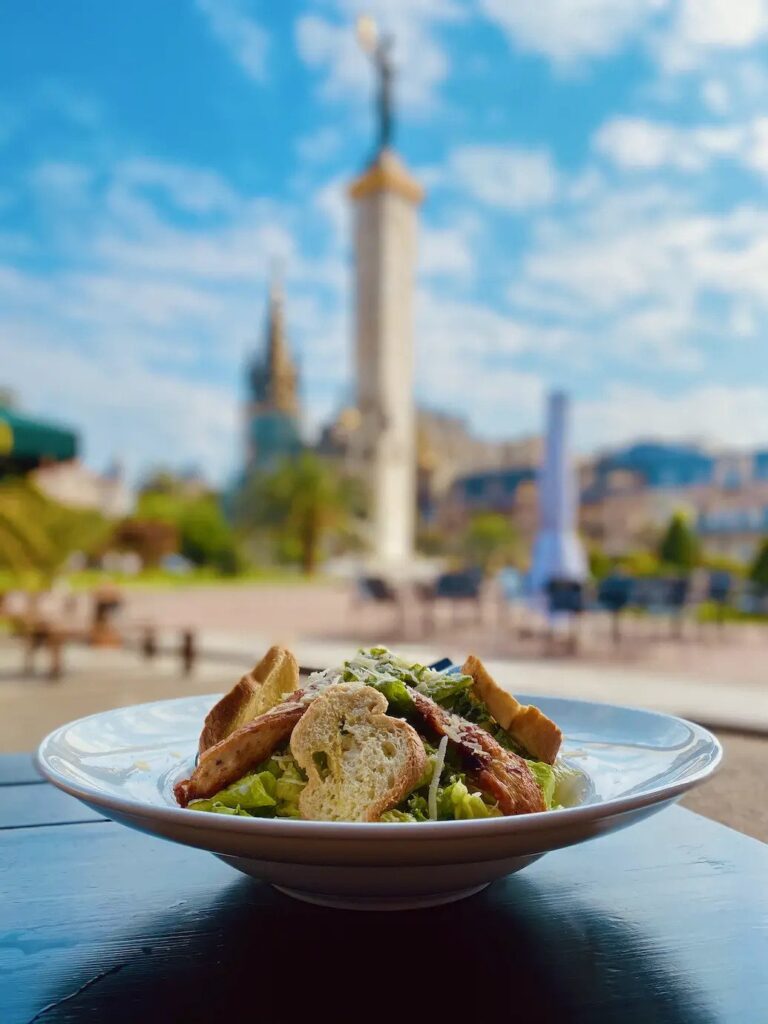In a TikTiok video with over half a million views, influencer and self-declared “holistic chef” Shayna Therese Taylor writes, “When your dairy and gluten intolerance doesn’t act up in Italy…even when you’re eating pizza, pasta and dairy regularly.” The video features a montage of an effortlessly-chic Taylor enjoying everything from croissants to truffle pasta to cheesy thin-crust pizzas. She clarifies in her caption that she does not have celiac, an autoimmune disorder that causes a reaction to the protein gluten; rather, she has an intolerance to gluten and dairy.
While some comments express skepticism, claiming that dairy and gluten tolerance exist all the same in Europe, the majority of commenters jump to support Taylor’s claims. Some users recount their own experiences traveling all over Europe eating gluten and dairy only to return to the United States unable to eat a piece of toast with butter and jam.
Input the search terms “food intolerance Europe,” and you’ll be met with several dozen videos echoing the same narrative: an American with food intolerances travels to Europe and enjoys bread, tiramisu and smelly cheeses. Said American returns to the United States to discover the fun is over.
Gluten and dairy make their stomach churn, prompting them to opt for a gluten- or dairy-free diet once again. If they’re adept at social media, the American may then post a TikTok reminiscing about their glory days filled with baguettes and gelato.
The driving message behind these videos seems to be that something is wrong with American food — so wrong, in fact, that these intolerances can be cured simply by eating food in Europe. While the main question is whether there is any scientific merit for this bizarre relief, there’s one significant issue that must be addressed first.
As of now, the bulk of videos portray American food as bad — causing intolerances — and European food as good — “curing” intolerances. Of course, this apparent phenomenon is an absurdly oversimplified take on food. It excludes all other cuisines from the conversation. What about Korean food, Ethiopian food or Peruvian food? By no coincidence, food and travel influencers, most of whom are white due in part to racial inequities in influencer pay and discrimination sewn into the algorithm, have conveniently forgotten to include any non-Western countries in their comparisons.
By deeming European food — which is quite diverse on its own — as the “good” or “healthy” option, influencers are also inherently implying that other cuisines are not healthy. This furthers a dangerous perspective that Europe is sophisticated, clean and healthy, and other cultures are the opposite.
Now that we’ve addressed the eurocentrism featured in these videos, we can take a closer look at whether the phenomenon these influencers are promoting is actually credible.
The commonly-proposed theory for gluten intolerance in the United States is that food, wheat in particular, is different in two ways. Firstly, people suggest that wheat grown in the United States has a higher gluten content. Secondly, U.S. wheat is thought to be produced with more herbicides.
It is true that the majority — about 60% — of wheat grown in the United States is hard red wheat, which has a higher protein, typically gluten, content. On the other hand, the majority of wheat grown in Europe is soft wheat, which has a lower gluten content. In essence, if someone with gluten intolerance were to eat a piece of bread made from hard red wheat, they might experience more severe symptoms than if they were to eat bread produced from soft wheat.
It makes sense, then, that someone with a mild gluten intolerance might report more gluten freedom in Europe. However, the issue is not so straightforward. Unless a customer conducts an extensive investigation, there is really no way to know that they are consuming a Parisian baguette made with flour from soft wheat or hard wheat. While soft wheat is more common in Europe, in 2021, 17.5% of U.S. wheat exports went to Europe. This means that U.S. hard wheat is, in fact, present in at least some European goods.
The second theory, that it is the production mechanisms of wheat that contributes to this phenomenon, seems more probable. It is well known that Europe tends to have stricter standards when it comes to herbicides, pesticides and chemical additives in food. The European Food Safety Authority has banned chemicals such as rGBH growth hormone, yellow dyes no. 5 and 6, rBST growth hormone and potassium bromate while they continue to be used in the United States.
Another herbicide, glyphosate, is widely used in U.S. wheat production but seldom in Europe. An early study on glyphosate performed on fish suggests that it may contribute to digestive issues “reminiscent of celiac disease.” The less frequent use of additives, as well as differences in lactose content in milk products in Europe, is similarly theorized to contribute to the dairy intolerance phenomenon.
While the second theory offers more scientific evidence, it also implies that there’s a chance the people who claim to experience gluten and dairy intolerance in the United States, but not in Europe, have the wrong idea. It is possible that it is not actually gluten or dairy that is causing them stomach discomfort in the United States, but rather the added chemicals and preservatives. Because these are less common in European countries, travelers may feel a sense of temporary relief.
Of course, none of the influencers who are posting aesthetic travel food videos claim to be scientists or experts in nutrition, but there is a level of caution that should be employed when posting about food and food intolerances.
First, in a diet culture-obsessed society, the last thing needed from people with social influence is narratives that promote fear around certain foods. And second, it could be dangerous to advertise supposed food tolerance, when this may not actually be the case for some people.
Just imagine how upset a traveler would be to find out after a full day of baguettes, croissants and pizza that, shockingly, they still can’t handle their gluten and dairy.







